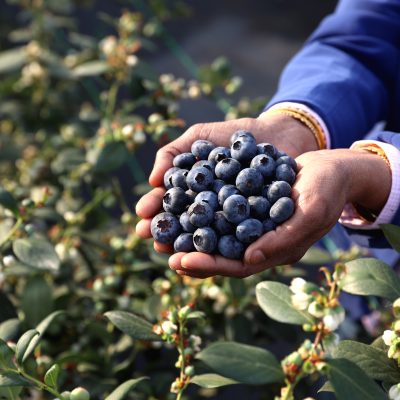Beyond tariffs, how can the global blueberry industry make the best of this new reality?
- . April 2025
By Mario Steta
In thinking of ideas to discuss within this space, I visualized global trade as a central theme, but did not foresee that it would fundamentally be the one topic to reflect upon and of concern in the past weeks, and certainly into the next months.
 As you read this editorial, being written April 4th, you will likely have been immersed on the outcomes of President Trump’s “Liberation Day” announcements, trying to understand impacts, the mechanics of how this will be implemented, and defining if and what could be the solutions to compensate or deal with the outcome of tariffs. Beyond all agreeing that this is an inflection point on global trade, and with not even economists, accountants or trade experts clear on many key issues and specific outcomes, there seems to be a consensus that for many economic sectors, and certainly for fruits and vegetable production, distribution and sales, what is being implemented will not be of benefit for consumers, and certainly not for growers in many global production regions. Something acknowledged by many USA producers that have seen the value and benefits of 52 week supply to costumers.
As you read this editorial, being written April 4th, you will likely have been immersed on the outcomes of President Trump’s “Liberation Day” announcements, trying to understand impacts, the mechanics of how this will be implemented, and defining if and what could be the solutions to compensate or deal with the outcome of tariffs. Beyond all agreeing that this is an inflection point on global trade, and with not even economists, accountants or trade experts clear on many key issues and specific outcomes, there seems to be a consensus that for many economic sectors, and certainly for fruits and vegetable production, distribution and sales, what is being implemented will not be of benefit for consumers, and certainly not for growers in many global production regions. Something acknowledged by many USA producers that have seen the value and benefits of 52 week supply to costumers.
As expressed on the February editorial, and even as I departed Washington DC last week after participating at the NABC/USHBC meetings and Hill Climb, in which I also had the opportunity to meet with some foreign and local officials, I was convinced that the USMCA
Agreement was pretty much history. So, it was a surprise to see that Canada and Mexico have been the countries less impacted, with 0% tariffs on products that comply with the rules of origin within the USMCA trade agreement.
Also, from exchanges in Washington with Peruvian and Chilean blueberry industry leaders, countries that in 2023 exported 110,000 and 83,000 tons respectively into the USA, the conversation was on how Mexico and Canada would deal with the tariffs, in no way what could the impact of a 10% tariff on their exports to the USA.
Limited in many ways on the scope of what I can understand of the situation, I am pondering some questions to try to make sense of things: which are the effective focus areas to consider? What actions to take? What could be the collateral consequences of such actions? How and who to engage with?
- It needs to be recognized that trade, as we know it or understand it until today, has had an impact in many of the constituencies in the United States, and that the need for a solution to these impacts is real.
- That tariffs as a response, and particularly the way they are being implemented, have already affected the credibility and trust of the American government and many of its institutions. While it could seem, this is something not of concern for those part of in support of the Trump administration, in a fortuitous dialogue with a Republican Senator from a Southern State, this was openly acknowledged and of concern.
- That it needs to be assumed that tariffs are a new reality, and that regions that can elevate their competitive position, in a very simplistic manner by at least 10%, may be able to compensate for the impact.
- Market diversification is a needed but partial solution, in which what will likely be higher prices in the USA, will result in lower prices in many countries.
- The value of having 52-week supply of fresh fruits and vegetables is undeniable. The fact that imports of blueberries to the USA are essential is recognized by growers, distributors, costumers, and organizations within the country. To this end, the gain of Canada or Mexico, cannot, should not be the loss of Peru or Chile. Will be interesting to see if and how the Trump Administration’s uses what seems to be at least a partial respect for USMCA rules, into the renegotiation of the agreement in 2026.
- I personally have no clarity or capacity to judge if and how countries should retaliate, but it is clear a muted response is not an option.
Would like to close by further emphasizing two thoughts. First, the need for organizations to develop common efforts on these matters, even if some perspectives differ, with a good example of this being the welcoming environment last week in Washington by both NABC and USHBC heads, Teddy Koukoulis and Bryan Sakuma, and by Kasey Cronquist, chair of both organizations. Second, the unique opportunity that our South Africa Summit in September provides for our sector to interact, analyze, discuss and generate actions and strategies on this and other essential topics impacting the global blueberry sector, and to which many USA growers have committed to participate in.
04.04.2025
IBO Editorial






